 |
 |
 |
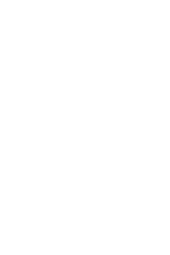
|
Ann Hamilton • habitus • 2016. Installation at Municipal Pier 9, made in collaboration with The Fabric Workshop and Museum, Philadelphia. Photo credit: Thibault Jeanson.
|
|
 |
THE FABRIC WORKSHOP AND MUSEUM TO UNVEIL AN IMMERSIVE ENVIRONMENT AND EXHIBITION CREATED BY ANN HAMILTON
Ann Hamilton:
habitus
17/9/2016-8/1/2017
Cloth Making—Among the Oldest Forms of Human Cultural Production—Provides Inspiration for the Renowned Artist’s Multi-Venue Project, habitus
Stained the color of the atmosphere, spinning curtains billow to gigantic proportions; thick rope pulleys rise and fall; whistles sound; a reader reads; and light glints through wooden slits: these stirrings are part of a new large-scale installation by the artist Ann Hamilton that animates a venerable 55,000-foot warehouse along the Delaware River.
|

|
Posted 13 October 2016
|
Share this:
|
|
The occasion is habitus, an exhibition presented by The Fabric Workshop and Museum (FWM) in two locations and in two phases: at Municipal Pier 9, an environment of cloth, sound, and light opens on Tuesday, September 6, 2016 and remains on view through October 10, 2016; at The Fabric Workshop and Museum, a three-floor installation of domestic and trade-related objects redolent of fabric making opens on Saturday, September 17, 2016 and remains on view through January 8, 2017. On Saturday, September 17, a public reception, free and open to all, will be held in both locations from 4:00 to 8:00 pm.
|
|
|
|
|
|
|
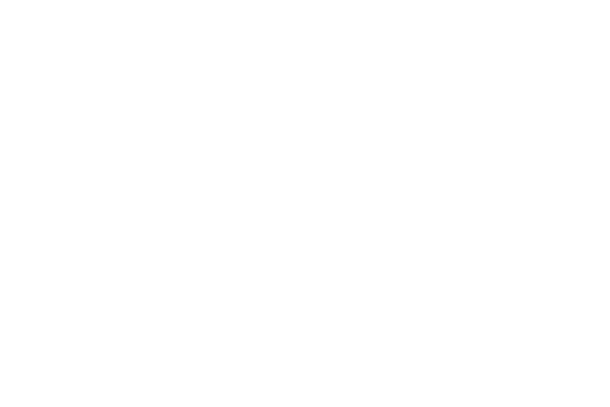
Ann Hamilton • habitus • 2016. Installation at The Fabric Workshop and Museum, made in
collaboration with The Fabric Workshop and Museum, Philadelphia. Photo credit: Thibault
Jeanson.
|
|
|
|
|

|

|

|
"Habitus is Hamilton's first major exhibition at The Fabric Workshop and Museum. We have collaborated twice before, the last being on her project for the American Pavilion at the 48th Venice Biennale (1999). These installations are surely among the most memorable ever to grow out of our Artist-in-Residence Program and we are thrilled to present this very ambitious dual-sited exhibition,” says Susan Lubowsky Talbott, interim executive director.
"Ultimately, habitus continues Hamilton's ongoing practice, one that connects "text" to "textile" through their shared root in language and in the physical nature of reading and sewing as the eye and hand move across a plane. Both activities are immersive and also intimate,” Talbott concludes.
Hamilton elaborates, "Cloth is the body’s first architecture; it protects, conceals, and reveals; it carries a body’s weight, swaddles at birth, covers in sleep and in death. When we speak of its qualities, we speak of a cloth’s hand: we know it through touch. Its felt experience is evoked and described by the other hand that we always inhabit, that of language."
Hamilton began this project by exploring Philadelphia’s textile collections and visiting some of its generations- old textile producers. Seeing looms that have been in operation for decades and watching raw material become a single thread, then a warp, and then a weft of a cloth: these experiences inspired the making of habitus.
“Just as cloth is a structure binding individual threads into a larger whole, this project encourages associative links between historical objects, literary excerpts, textile processes, and their individual forms of knowledge and experience,” says the artist.
|
|
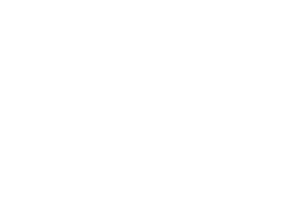
Ann Hamilton, shell, 2007. Felt coats. Edition of 25. 52 x 44 x 6 inches. Courtesy of the artist.
Photo credit: Carlos Avendaño
|
|
|
|

|

|

|
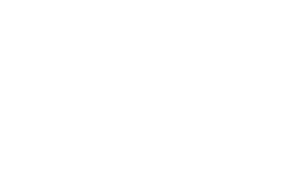
Ann Hamilton • habitus • 2016. Installation at Municipal Pier 9, made in collaboration with The Fabric Workshop and Museum, Philadelphia. Photo credit: Thibault Jeanson.
|
|
THE EXHIBITION Municipal Pier 9
For the installation, Municipal Pier 9 is open to the air, the breeze, and the weather on the Delaware River.
Rope and pulley mechanisms, inspired by the systems in cathedral bell towers, and activated by viewers set curtains spinning into motion. “The hand, listening to the ear, must know when to pull, when to hold and when to let go. The pattern of letting go and catching: that’s the sounding, the counting time of the body,” says Hamilton.
Hamilton describes reading as an essential element of her practice: “The immersive, broadly associative thinking engendered by the solitary, silent act of reading is, for me, a “making” space. I have come to wonder how the “invisible” experience that is the act of reading might become a form of materialized making, how the way one reads might be thought of as a form of drawing.”
Beyond the curtains’ classical drape or romantic engulfing billow, two poems written by Philadelphia poet Susan Stewart, CHANNEL and MIRROR, are projected onto a shipping container where wood benches invite silent reading. The reeling, pulsing words suggest the time and timelessness of a river’s flow: sweet water running, meeting, and merging with the ocean’s salt.
Habitus at Municipal Pier 9 is presented in association with 2016 Fringe Festival.
|
|
|
|
|

|

|

|
In the Museum
While the installation at Municipal Pier 9 is on the scale of landscape, the three floors Hamilton transforms in The Fabric Workshop and Museum are on the scale of thread, needle, book, and bed. The Museum’s galleries display a number of digital prints by Hamilton, along with a selection of historical objects—including literary commonplace books, textile sample books, dolls, and needlework portfolios—borrowed from Philadelphia museums and public collections.
The Design Center at Philadelphia University, the Free Library of Philadelphia, the Historical Society of Pennsylvania, the Library Company of Philadelphia, the Philadelphia Museum of Art, the Rosenbach Museum & Library, and Winterthur Museum Garden & Library generously allowed Hamilton access to their collections to choose objects to include in habitus.
Many of the objects collected by the artist are fragments of cloth and text. Hamilton is attracted by their color and their pattern, but more so by the potential of fragments to represent the material record of individual hands and to suggest the possibility of transformation. A picture of past lives—that of seamstresses, weavers, fabric printers, and individual makers—is evoked throughout the three floors. Lace samplers, fabric swatch books, and commonplace books are on view, alongside a collection of 19th century hand-woven blankets.
In addition to the display of historic collections, Hamilton worked with early-generation flatbed and wand scanners as tools to image the objects and generate a new series of prints, which render the objects’ tactility.
In its totality, this compendium of objects is the vision of an artist who says that her first hand was a sewing hand and who engaged with artifacts from the past to create this project.
On Tumblr: cloth ? a commonplace
|
|
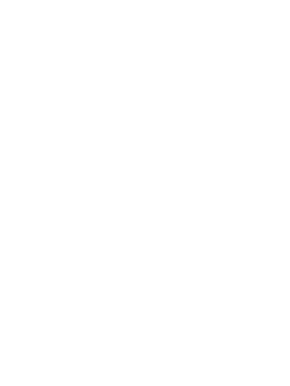
Ann Hamilton, (habitus • doll) Doll, 1800–1820. Papier-mâché; Wood; Linen; Cotton;
Paint; Silk. Courtesy of Winterthur Museum, Garden & Library, Gift of Katherine Gahagan,
Michael H. du Pont, and Christopher T. du Pont in memory of A. Felix du Pont, Jr., 1999.19.1.
|
|
|
|
|
|
Hamilton has invited the public to submit passages of published writing that reference the social and material life of cloth. Traditionally, the collection of texts from disparate sources is called a “commonplace” reflecting the idiosyncratic interests, organization, and practices of an individual reader. This assembly of excerpts will be offset on newsprint and distributed on long shelves in the exhibition for visitors to read and keep, thereby forming another collection.
Among the fragments now residing on Tumblr are a verse by Raymond Carver, shakily embroidered in coal black thread on a pale pink cloth, a passage from Middlemarch, and patching and mending samples from Home Economics classes in the 1930s. The public is invited to contribute passages to www.cloth-a- commonplace.tumblr.com.
A gallery guide written and designed by the artist will also be available.
After the completion of habitus, a comprehensive, illustrated publication will be created. More of an artist’s book than a conventional catalogue, it will be published by The Fabric Workshop and Museum.
About the Funders
Major support for Ann Hamilton: habitus has been provided by The Pew Center for Arts & Heritage, with additional support from the Coby Foundation, Ltd., the John S. and James L. Knight Foundation, The Philadelphia Cultural Fund, the National Endowment for the Arts, the Shipley-Miller Foundation, and the Delaware River Waterfront Corporation which allowed the use of their warehouse for this project and provided invaluable support.
|

|

|

|
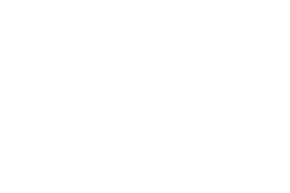
Distinguished University Professor of Art at The Ohio State University.
Ann Hamilton • habitus • 2016. Installation at Municipal Pier 9, made in collaboration with The Fabric Workshop and Museum, Philadelphia. Photo credit: Thibault Jeanson.
|
|
About the Artist
Ann Hamilton is internationally recognized for her large scale, multi-media installations, including the event of a thread, which was staged in 2012 at the Park Avenue Armory in New York.
Born in Lima, Ohio, Hamilton studied the textile arts at the University of Kansas before earning a MFA in Sculpture from the Yale University School of Art. Hamilton has received a National Medal of Arts, MacArthur Fellowship, Guggenheim Memorial Fellowship, NEA Visual Arts Fellowship, United States Artists Fellowship, the Heinz Award, and was chosen to represent the United States at the 1991 Sao Paulo Biennial and the 1999 Venice Biennale. In 1992, she established her home and practice in Columbus, Ohio. She is currently a Distinguished University Professor of Art at The Ohio State University.
|
|
|
|
|
|
About The Fabric Workshop and Museum
Artists come from around the world to create work at The Fabric Workshop and Museum, whose Artist-in- Residence Program is renowned as a laboratory for experimentation with new materials and media. Artists may chose to explore methods that seem quite far from the process of fabric making, as did Janine Antoni earlier this year in the ambitious time-based installation, Ally, or open up a new perspective onto a traditional fabric form, as did Richard Tuttle in Both/And Richard Tuttle Print and Cloth (2015).
Through collaborations like these, the Museum has built a permanent collection of more than 6,000 works of art and an archive that preserves and documents the course of artistic production from inspiration to realization. An ambitious program of exhibitions and publications, a comprehensive website, and wide-ranging educational programming also support FWM’s commitment to conveying a story of contemporary art that unites process with finished works.
The programs of The Fabric Workshop and Museum are supported by AG Foundation; The Andy Warhol Foundation for the Visual Arts; The Arcadia Foundation; Christian R. and Mary F. Lindback Foundation; The Coby Foundation, Ltd.; Dolfinger-McMahon Foundation; E. Rhodes and Leona B. Carpenter Foundation; Edna W. Andrade Fund of The Philadelphia Foundation; The Honickman Foundation; Institute of Museum and Library Services; the John S. and James L. Knight Foundation; LLWW Foundation; SM
Louis N. Cassett Foundation; Museums ConnectSM made possible by the US Department of State’s Bureau of Educational and Cultural Affairs and administered by the American Alliance of Museums; the National Endowment for the Arts; New Millennium Charitable Foundation; The New York Community Trust; Pennsylvania Council on the Arts, a state agency funded by the Commonwealth of Pennsylvania and the National Endowment for the Arts, a federal agency; The Pew Center for Arts & Heritage; The Philadelphia Arts in Education Partnership; The Philadelphia Cultural Fund; the Shipley-Miller Foundation; and the Board of Directors and Members of The Fabric Workshop and Museum.
For information and examples of public submissions for the Ann Hamilton: habitus project, visit: http://www.cloth-a-commonplace.tumblr.com
See the Agenda page Cloth Making—Among the Oldest Forms of Human Cultural Production—Provides>
The Fabric Workshop and Museum
1214 Arch Street, Philadelphia, PA 19107
+1 (215) 561.8888
www.fabricworkshopandmuseum.org
|
|
|
|
|
|
|


